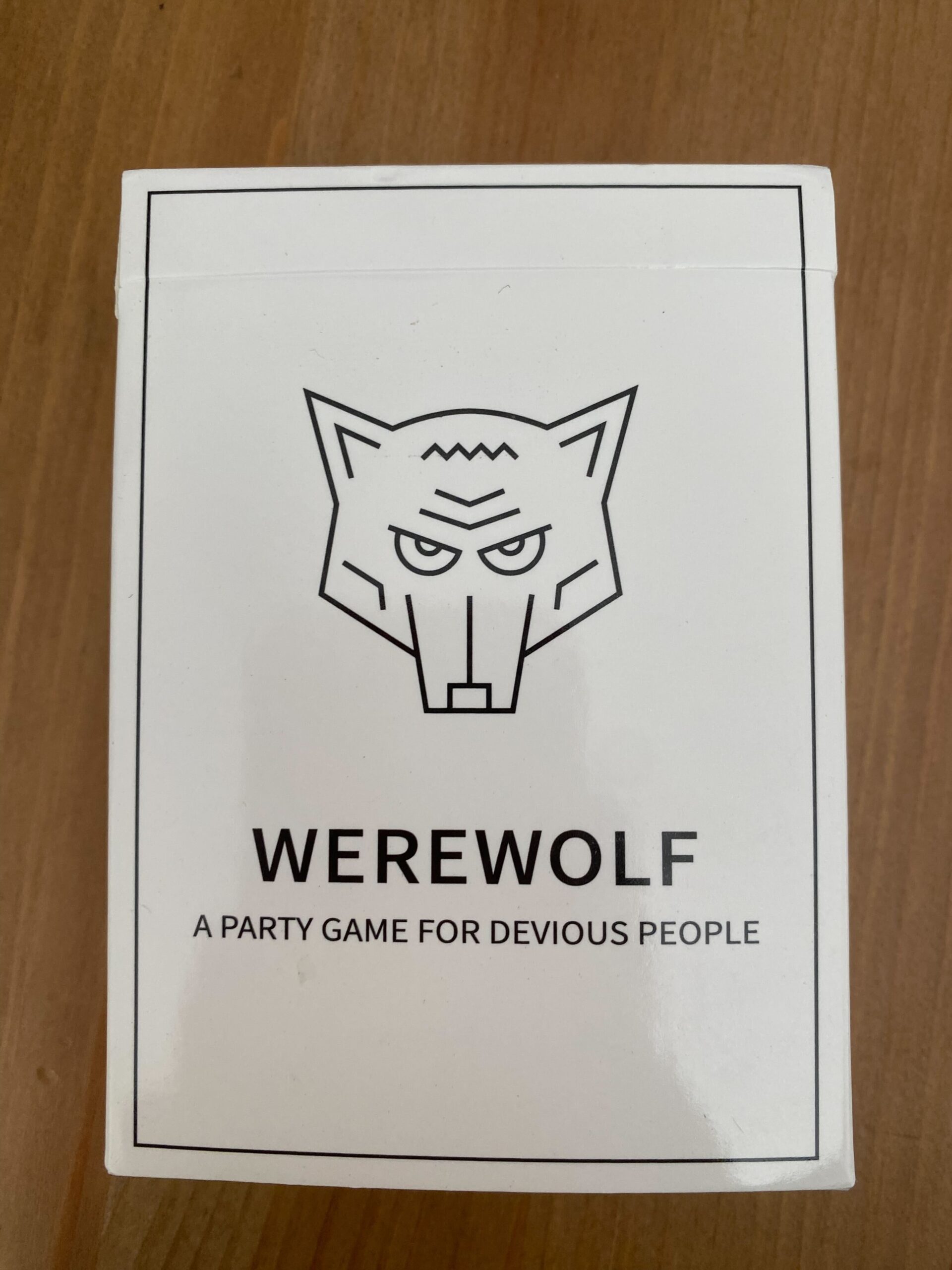Embark on a thrilling journey of mystery, deception, and strategy as you learn to play the classic social deduction game of Werewolf. Perfect for beginners, this guide will familiarize you with the game’s basics, setup, and gameplay, while also providing essential tips for developing winning strategies and enhancing roleplaying and communication skills. As you advance, explore additional roles and game variations to keep the werewolf hunt exciting and challenging.

This article contains Amazon affiliate links. I will earn a small fee if you use one of these links to make a purchase. It will not increase the price you have to pay!
Understanding the Concept
Werewolf, also known as Mafia, is a fun and engaging social deduction game played by a group of people. The game is set in a small village where people live side by side with werewolves. The goal for the villagers is to eliminate the werewolves and restore peace to the village, while the werewolves aim to eliminate the villagers or gain the majority.
Objectives
- For the villagers: identify and eliminate the werewolves to save the village.
- For the werewolves: deceive the villagers, eliminate them, or gain the majority to take over the village.
Game Elements
The game is divided into two alternating phases: Day and Night. During the day, players discuss, argue, and vote to eliminate a suspected werewolf. During the night, werewolves secretly choose a villager to eliminate, while other special roles perform their actions in secrecy.
Number of Players
Werewolf can be played with a minimum of 6 players and can accommodate large groups. It is recommended to have at least 8-10 players for a more enjoyable experience.
Getting Familiar with Roles and Abilities
There are several roles in Werewolf, each having unique abilities. The basic roles are Villagers and Werewolves, but some variations introduce special roles to make the game more exciting.
- Villagers: Regular villagers have no special abilities. Their main power lies in their ability to discuss, deduce, and vote during the day phase.
- Werewolves: They work together to eliminate the villagers while keeping their identities hidden. Each night, they secretly choose a villager to eliminate.
- Seer: A villager with the ability to see the true identity of a player. Each night, the Seer can choose one player to check if they are a werewolf or not.
- Doctor: A villager with the power to heal. Each night, the Doctor can choose one player to protect, preventing them from being eliminated by werewolves.
- Bodyguard (optional): A villager with the ability to guard another player. Each night, the Bodyguard can choose one player to protect, making them immune to any attack.
- Tanner (optional): A player with the unique goal of being eliminated by the village. If the Tanner is voted out, they win the game, and both villagers and werewolves lose.
Game Setup
- Choose a moderator who will control the game, assign roles, and guide players during day and night phases. The moderator doesn’t participate as a player.
- Based on the number of players, distribute the roles (usually 1 werewolf for every 3-4 villagers). It’s recommended to include at least one special role.
- The moderator gives each player a role card (or assigns roles verbally in secret). Players must not reveal their role to anyone.
Now that you’ve understood the basics of the game, gather your friends and enjoy a thrilling game of Werewolf! Don’t forget to pay attention to each player’s actions and words, as deception is at the heart of this game. Good luck!

Mastering the Gameplay
Werewolf is a popular social deduction game for large groups, often played around a campfire or at parties. The game involves players taking on roles in a village, with some players being innocent villagers and others being werewolves trying to kill off the villagers one by one. The goal is for either the villagers to eliminate all the werewolves or the werewolves to equal or outnumber the villagers.
Mastering the Gameplay of Werewolf.
1. Gather a group of players (usually 8 or more) and decide on a moderator. The moderator will help guide the game and be responsible for keeping track of the game’s sequence, roles, and events. The moderator should be familiar with the rules and gameplay.
2. The moderator will assign roles to each player.
The basic roles for a game of Werewolf are:
Moderator:

You facilitate the entire game while ensuring rule compliance. Follow the moderator guide card for help and support.

Villagers:

Ordinary players with no special abilities, who seek to eliminate all the werewolves.
Werewolves:

Players who are trying to eliminate the villagers and gain control of the village. They know who the other werewolves are and try to maintain their secrecy.
Seer:

A villager with the ability to learn a player’s true role once per night. Additional roles can be added for variation and strategy, such as the
Doctor:

Heals one player each night.
Drunk:

Can only communicate by gestures and noise only; no words.
Witch:

Use 1 potion to ‘heal’ and 1 poison to ‘kill’ during the Night. 1 Potion and 1 Poison per game. 1 action per Night.
Alpha Werewolf:

Must say “Werewolf” once each Day or die the next Night. You must identify yourself (raise h
How does the game start?
The game starts with a Night phase, during which all players close their eyes. The moderator will then guide specific roles through actions in the following sequence:
a. The moderator will ask the werewolves to open their eyes and silently choose a player to eliminate that night. Once they have made their choice, the werewolves close their eyes.
b. The moderator will ask the seer to open their eyes and silently choose a player to investigate. The moderator will then give a thumbs-up for villager or thumbs-down for werewolf. The seer closes their eyes.
c. If there are other roles with special abilities, the moderator will guide them through their actions during the night as well.
What happens after the night phase?
After the Night phase, the moderator begins the Day phase by announcing any players that were killed during the night. Those players are eliminated from the game and cannot speak or provide information.
During the Day phase, all players engage in discussions and debates, trying to deduce who might be a werewolf based on clues, behaviors, and strategies. Players should present their arguments and listen to others’ opinions.
After discussions, the moderator calls for a vote to decide who will be eliminated during the Day phase. Each player points at the person they suspect of being a werewolf. The player with the most votes is eliminated.
The game then alternates between Night and Day phases, with players being eliminated each round. Players should continue to participate in discussions and decisions during the Day phase, keeping in mind the information gathered from previous rounds.
How does Werewolf end?
The game ends when either all werewolves have been eliminated (villagers win) or the number of werewolves equals or outnumbers the remaining villagers (werewolves win).Remember to be respectful of others during discussions and enjoy the game’s social and strategic aspects. Werewolf can be a fun and thrilling experience for beginners and experienced players alike. Happy playing!

Developing Winning Strategies
Werewolf is a game of deception, collaboration, and strategy, where two groups, ‘Werewolves’ and ‘Villagers,’ compete to fulfill their objectives. The Werewolves aim to eliminate the Villagers, while the Villagers try to find the Werewolves and eliminate them. Here are some strategies for both sides of the game.
General Tactics:
- Active Participation: Be actively involved in game conversations and voting rounds. Engage with other players to gather information about their roles and to build alliances.
- Blending In: Don’t draw too much attention to yourself, as you don’t want to become a target for either group. Be cautious, and try to blend in with the crowd.
- Observations: Pay attention to players’ behavior, language, and voting patterns. This will help you identify potential allies or suspects and make more informed decisions.
Strategies for Villagers:
- Communication: Effective communication is crucial for the Villagers to win. Share information about your roles and suspicions, and try to come to a consensus about whom to vote against.
- The Power of Doubt: You can try to create doubt about a player you suspect to be a Werewolf by pointing out suspicious behavior, inconsistencies in their story, or accusing them directly. However, be careful not to make false accusations, as this may damage your credibility.
- Building Trust: Develop trust with fellow Villagers to form alliances and work towards finding and eliminating the Werewolves.
- Special Roles: If you have a special role (e.g., Seer, Doctor, etc.), use your abilities wisely and discreetly to support the Villagers’ cause. Don’t reveal your role too early, as it may make you a target for the Werewolves.
Strategies for the Werewolf:
- Deception: This is the core of the Werewolf strategy. Pretend to be a Villager by engaging in conversations and building alliances with genuine Villagers while secretly planning against them.
- Accusation Strategies: Divert attention from yourself or your fellow Werewolves by accusing other players of being Werewolves. Be careful not to overdo it, as this may also draw suspicion towards you.
- Targeting: Choose your targets wisely. Eliminate players with special roles that pose a threat to the Werewolves or players who are influential among the Villagers.
- Voting Patterns: Be careful with your voting patterns, as they may reveal your identity. Do not always vote with other Werewolves; occasionally, vote against them to maintain your cover.
- Protecting Your Pack: In some situations, it may be wise to throw one of your fellow Werewolves under the bus to protect your cover or another Werewolf’s identity.

Roleplaying and Communication Skills in Werewolf
Introduction: Werewolf is a popular social deduction game that enhances your interpersonal and persuasion skills through roleplaying, bluffing, and teamwork. As a beginner, learning how to play Werewolf may seem daunting, but with these simple instructions, you will quickly become a pro.Objective: Identify and eliminate players with hidden roles while forming alliances and mastering persuasion techniques.Materials: A deck of Werewolf game cards (or any standard deck of playing cards) and a group of players (preferably 6-20).Step 1: Understanding the RolesStep 2: Setting Up the GameStep 3: Mastering Roleplaying and Communication Skills

With a solid understanding of Werewolf’s game basics, setup, phases, and roles, you’re ready to dive into this realm of intrigue and deception. As you grow accustomed to the gameplay, improve your strategies and communication skills, making you a formidable ally or a cunning adversary. Never forget to embrace the unexpected twists and turns Werewolf offers, ensuring your gaming experience is always fresh and thrilling.
Frequently Asked Questions
Q: What is Werewolf?
A: Werewolf is a social deduction game where players take on roles of villagers and werewolves. The villagers aim to identify and eliminate the werewolves, while the werewolves try to deceive the villagers and avoid detection.
Q: How many players are needed to play Werewolf?
A: Werewolf is typically played with a minimum of 6-8 players but can accommodate larger groups. The game thrives on interaction and discussion, so more players often lead to a more engaging experience.
Q: What are the basic roles in Werewolf?
A: The game involves various roles such as villagers, werewolves, seer, and healer. Villagers work together to identify the werewolves, while the werewolves try to eliminate villagers. The seer has the ability to investigate the roles of other players, and the healer can protect a player from being eliminated.
Q: How does the game progress?
A: The game is divided into day and night phases. During the day, players discuss and vote to eliminate a suspected werewolf. At night, the werewolves choose a victim to eliminate. The game continues until either all the werewolves are eliminated, or the werewolves outnumber the villagers.
Q: Are there strategies to improve my gameplay in Werewolf?
A: Yes, there are various strategies you can employ, such as observing player behavior, analyzing voting patterns, and gathering information through discussions. Additionally, the ability to bluff and deceive can be crucial for both villagers and werewolves.
Q: Can Werewolf be modified or customized?
A: Absolutely! Werewolf is highly customizable. You can introduce additional roles, adjust game mechanics, or implement special rules to tailor the experience to your group’s preferences. Experimentation with different variations can enhance replayability.
Q: Are there alternative versions or similar games to Werewolf?
A: Yes, Werewolf has inspired numerous similar games, such as “Mafia,” “One Night Ultimate Werewolf,” and “The Resistance.” These games share the social deduction element and provide unique twists on the gameplay.
Q: How do I introduce Werewolf to new players?
A: When introducing Werewolf to new players, explain the rules clearly and provide guidance on basic strategies. Encourage open discussion and ensure that everyone understands the game’s objective and mechanics before starting.
Q: Where can I find additional resources and guides for Werewolf?
A: For more resources, strategies, and guides on playing Werewolf, visit CardsAndBoards.net. Explore our collection of game guides and enhance your Werewolf gameplay experience! Alternatively, the full rules for the game can be found at www.playwerewolf.co/rules
